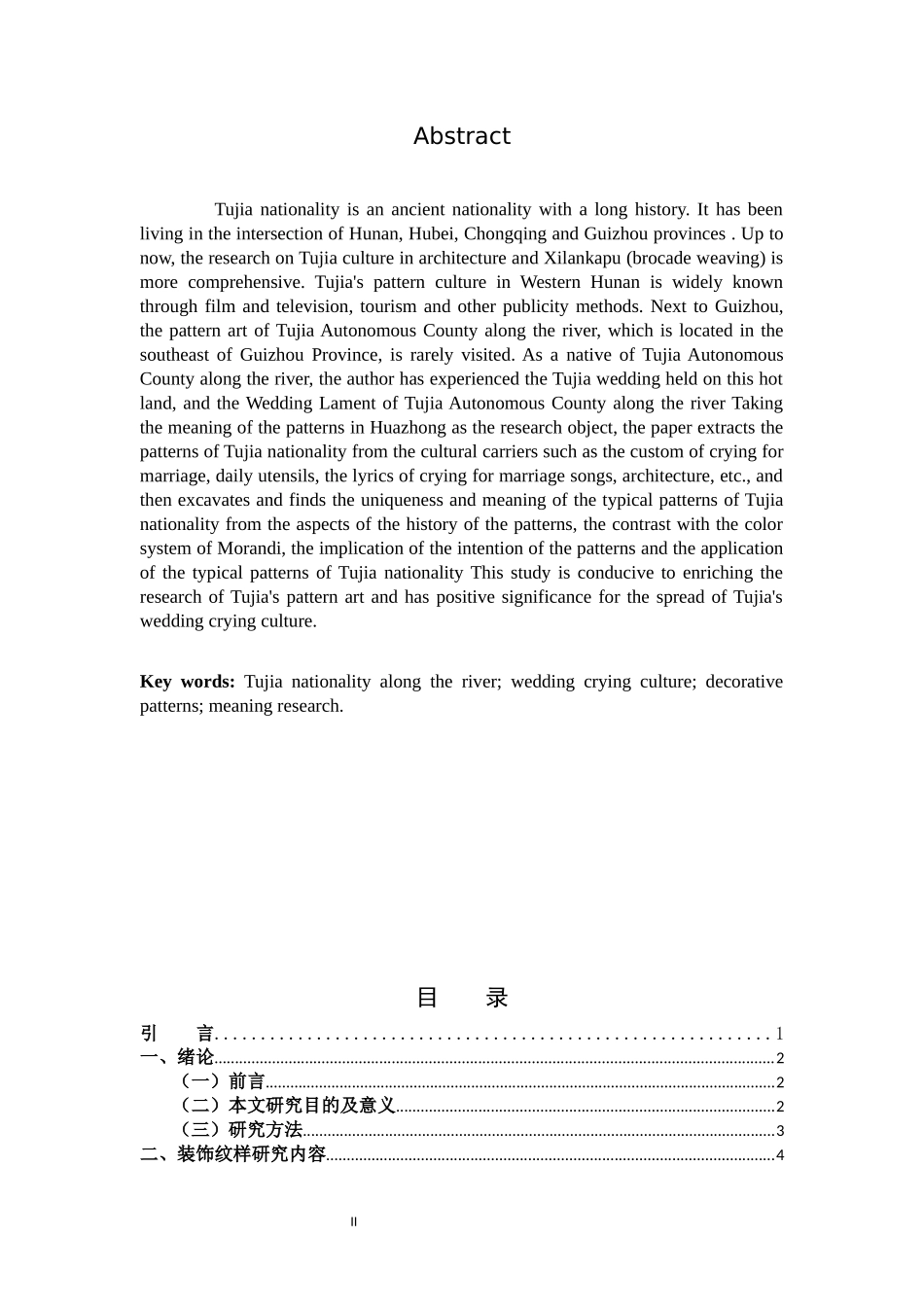I摘 要土家族历史悠久,分布在中国的湘、鄂、渝、黔四省交汇处。截至目前为止学界对土家族文化在建筑和西兰卡普(锦织)方面研究较为全面。湘西一带土家族纹样文化通过影视、旅游业等宣传方式继而广为人知,黔地次之,位于黔东南一代的沿河土家族自治县纹样艺术更是鲜有人问津,笔者作为沿河土家族自治县本地人,亲生经历过在这片热土上的举行的一次次土家族婚礼,以沿河土家族自治县哭嫁文化中纹样的含义为研究对象,通过民族哭嫁习俗、日常器皿、哭嫁歌歌词、建筑等文化载体中提取土家族纹样,再从纹样的历史、与莫兰迪色系对比、纹样意向本身寓意以及土家族人典型纹样的应用等方面挖掘和发现土家族哭嫁文化中典型纹样的独到之处及其含义,这一研究有利于丰富土家族纹样艺术研究,对土家族哭嫁文化的传播有积极意义。关键词:沿河土家族;哭嫁文化;装饰纹样;含义研究。IIAbstractTujia nationality is an ancient nationality with a long history. It has been living in the intersection of Hunan, Hubei, Chongqing and Guizhou provinces . Up to now, the research on Tujia culture in architecture and Xilankapu (brocade weaving) is more comprehensive. Tujia's pattern culture in Western Hunan is widely known through film and television, tourism and other publicity methods. Next to Guizhou, the pattern art of Tujia Autonomous County along the river, which is located in the southeast of Guizhou Province, is rarely visited. As a native of Tujia Autonomous County along the river, the author has experienced the Tujia wedding held on this hot land, and the Wedding Lament of Tujia Autonomous County along the river Taking the meaning of the patterns in Huazhong as the research object, the paper extracts the patterns of Tujia nationality from the cultural carriers such as the custom of crying for marriage, daily utensils, the lyrics of crying for marriage songs, architecture, etc., and then excavates and finds the uniqueness and meaning of the typical patterns of Tujia n...


